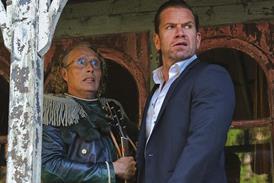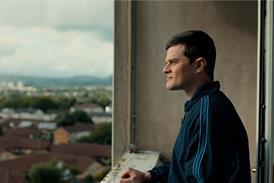The Korean master talks about how his life in 1980s Korea inspired Thirst, in a Jerusalem Film Festival masterclass.

When an air raid alarm sounds during Park Chan Wook’s Masterclass at this year’s Jerusalem Film Festival, half the audience reluctantly but obediently leaves the room to seek shelter. Those who remain hear the philosophy-student-turned-filmmaker quietly comments, “Korea and Israel are the only two nations in the world where you are discussing moviemaking in one room while a rocket is targeted at the room next door.”
There is political context in the air, although the immediate tension dissipates quickly and the filmmaker returns to discussing Thirst. The theme and aesthetics of the 2009 vampire classic, his favourite among the movies he’s made to date, are a primary focal point of this 90-minute session attended by young filmmakers and avid Park Chan Wook fans.
Park, who aligns his philosophy with Taoist teachings, identifies with the movie’s main character — not because he’s a priest who becomes a vampire, but because he, like the film’s fallen father, is constantly trying to justify himself.
“That comes from my experiences in Korea during the ’80s, when we were struggling for democratization. I was in college and our student demonstrations were met with extreme violence. I was afraid to participate then. Now I explore violence in my films, and its relationship to love, sexuality, anger and fear.”
The filmmaker says the visual and audio elements are designed to support story, in Thirst and all of his films.
“I work with a storyboard, planning everything in advance, but using it as a reference for discussion, for collaboration with my cinematographer, the designers — sets, lighting, art and all of them, including audio — and with the actors.”
“Things change, especially when the actors feel uncomfortable with something. I can get into the heads of my characters when I write them — there’s a moment when understanding comes. But actors must have freedom to feel them differently. I can’t get into my actors’ heads. I have to appreciate and accept what they bring.”
Park designs images as metaphors. In Thirst, the priest’s vampire transformation entails blood “flowing from every hole in his body, but since he’s wearing clothes, that idea is imaged as blood gushing from the recorder he’s playing, the same recorder that he’s used to comfort dying patients in the hospital. So, the recorder and the blood serve several storytelling functions. That kind of economy is important to me.”
“Using sound design to underscore the image’s impact is also economical, especially when it’s integrated with music. Images are interpreted by the conscious mind and intellect. Sound stimulates on a subconscious level, giving the audience a heightened experience they feel, but may not immediately understand.”
As an example, the filmmaker cites the mahjong scene in Thirst, where vampires pursue their victims down a long hallway, their footsteps and beating on closed doors in synch with music that resembles a heartbeat.
“I feel it’s particularly important to generate innovative elements that twist genre standards so that audiences encounter the unexpected in familiar places — that excites and heightens the audience’s essential emotional responses of love, sexuality, anger and fear.”
Thirst certainly does that with the vampire genre. And bringing new nuances and transformations to familiar movie genres is a prevailing characteristic of Park Chan-Wook’s cinema philosophy and practice, as shared in his Masterclass here.















![[Clockwise from top left]: Paul Thomas Anderson, Chloe Zhao, Ryan Coogler, Park Chan-wook](https://d1nslcd7m2225b.cloudfront.net/Pictures/274x183/9/0/0/1467900_writerdirectors_192733.jpg)





No comments yet